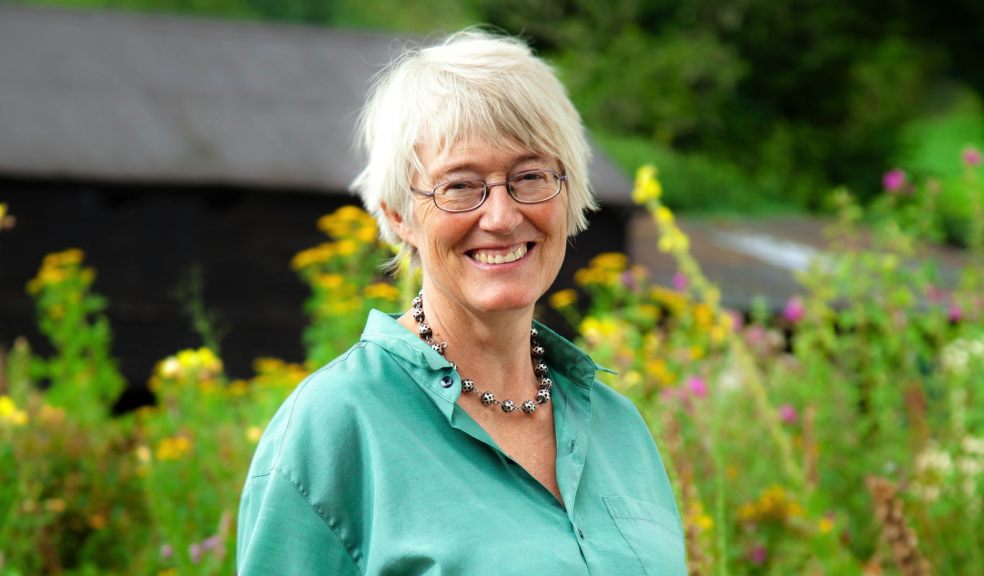
Mary Quicke's Dairy Diary - November 2012
Leaves whirl off the trees, darkness comes early, the briefly lighter mornings darken too. The sun rises closer to the south, and at noon gets lower every day. A walk through the woods is a walk through lots of leaves, before they start breaking down to leaf litter. The last of the apples come off the trees, a rich cider smell rises, reproaching us for the apples we didn’t pick. I saw a robin, bold and curious, with that intensely sweet song, sitting on the wall in a watery gleam of sun, king in his own territory now the noisy summer visitors have gone. The fallow deer finish their rut, that disembodied roaring, a challenge to other bucks, and I guess alluring to the comfortable groups of does waiting the outcome with complacency.
CROPS - We wait for the gaps in the rain to complete the autumn tilling. For a good soil structure, we need to wait for it to be dry enough so that we don’t turn it to soup, ‘forcing a seedbed’, where we have squashed the gaps out and the newly germinated plant roots struggle to find oxygen. We want a good start to the plants’ lives to get a good yield, after this year’s tricky harvest - dry in spring, then cold and wet in summer, giving shrivelled grains we pay penalties on when we sell. So we watch to see the velvet sheen of the newly-emerging crops, and watch like hawks for slug damage, and treat - most of it, it is such a sluggy year.
MAIZE - The maize eventually made a crop, with cobs surprisingly large & well filled, but the plant stems did not stiffen with maturity. It was heart-stopping to see the harvester snap cobs off and leave them behind and knock whole rows down. Eventually, with sharper knives and adjustments to the machine, we harvested most of the crop. We had the cows in fields that could hold them to clear as much up as they could. Altogether, it yielded only a third of a normal crop - now an expensive feed, with all the costs of a normal crop. Our barns are looking a little emptier than we would like, so we hope for a short winter.
GRASS - The grass has grown well and kept the cows fed. A wet autumn means we have had to hold cows in at night earlier - if it is dry, the spring cows will be out again finishing up. At the same time, we don’t want to leave grass too long overwinter in case we have a hard winter, which can damage grass left too long. It’s always a balance to graze cows when it’s wet - we want the grass harvested without too much damage to the soil. The soil does have the winter to recover; it’s surprising what our friends the worms manage to restore, and frost breaks up any clods and shallow hoof marks. We are busy fencing livestock fields so we can graze them tighter, and have more land growing crops while the prices are so high.
COWS - The spring cows will be out grazing last, in their last few weeks of milking before their pre-calving holiday. If it gets too wet, they will be on the fields for a couple of hours, where they can take in up to 4/5th of a day’s grazing if they go out with an edge on their appetite. We bring them in before they start wandering around, making a mess. It is surprising even on our heavy grazing ground how much they can harvest. They autumn cows are tucked up inside being fed some of our scarce silage. They are bulling (riding each other, frolicking and asking for the bull). They bull much better out in the field where they are sure of their footing, but being in full milk, they need more feed than the fields can provide, so we watch them for several hours each day. We check who is ready for the bull and pull them aside after morning milking. The AI man attends to the cows for the first 3 weeks, and then we catch up the ones who have come round again or didn’t come bulling till later.
We serve cows in a sequence of breeds so we get the animal who will graze well and produce the milk we want. If your sire is a New Zealand Friesian, you have a Swedish Red bull (actually a straw of semen from one). Swedish Red daddy? This year you get a little Holstein who’s proved himself in a grazing system. Before you would get a Montbeliard, and that will come as the fourth breed still, but we think the Montbeliard on the Swedish Red was giving a cow that was slightly too late to puberty, and too small rear teats (it’s amazing what we spend our time thinking about).
CALVES - The calves come out different colours, but surprisingly grow into a coherent herd of cows. The calves and heifers come in, bedding on our precious straw, and this year they will feed on it, to extend our scarce silage short. It’ll need topping up with hard feed, maize gluten or similar, expensive this year with the drought in America.
CHEESE - All of the breeding is to have cows who make the perfect milk for our cheese from grazed grass. November cheese still has some grazed grass in it, with that extra lift it gives. The milk is richer as the spring cows get to late lactation and produce smaller amounts of milk higher in solids. It makes a cheese luscious and rich. It’s more difficult to manage, and easier to damage pumping, so we are seeing where we can pump more gently. We also need to cut the junket finer and reduce starter to make sure the make doesn’t go over-acid. We want the acidity in balance with the butteriness, not just an acid spike. We don’t use the ‘helveticus’ starter that gives the sweet flavours so popular in supermarket cheddar, which is about giving a one-dimensional answer to the problem of over acidity. We look to carefully bring out all those complex flavours of the milk, to give layer after layer of flavour, so that each mouthful gives you the full story of field, and cow, and starter, and make, and the long gestation in the store in the cloth.
SHOP - solve your Christmas present problems in one go with a box or basket of cheese. Share our beautiful Devon view and all those rich flavours with your friends. Come and choose what they would like, or we can suggest some favourite combinations: each box or basket is made up in the shop to your requirements. Call the shop 01392 851000 - or www.quickes.co.uk or email shop@quickes.co.uk. I love telling people the story of the cheese as they enjoy eating it, and it’s lovely to see their surprise and interest as they get the depth of flavour that’s available with a traditional cheese.
RECIPE - Tess McNamara, staying with us from the US to organize our Apple Day, went with Richard of Gibson’s Plaice to Brixham Market, and came back with 4 huge live lobsters. We thanked them (and her) for their gorgeousness, and ate one each with Quickes Traditional Whey Butter stewed with a bit of garlic from my garden. We boiled up the shells, and made a wonderful lobster broth. I couldn’t wait to try it out, so next day I cooked a simple watercress (actually American land cress from my garden) and potato soup. I chopped a few potatoes and boiled in the broth till tender, then added a good handful of chopped watercress, and whizzed with a stick whizzer. I could have put some cream in it, but I wanted it not too rich after our lobster feast. It was utterly glorious topped with a little grated Quickes Traditional Extra Mature Cheddar to give a good bass note to the flavour.
MARY QUICKE
Twitter: @maryquicke

















